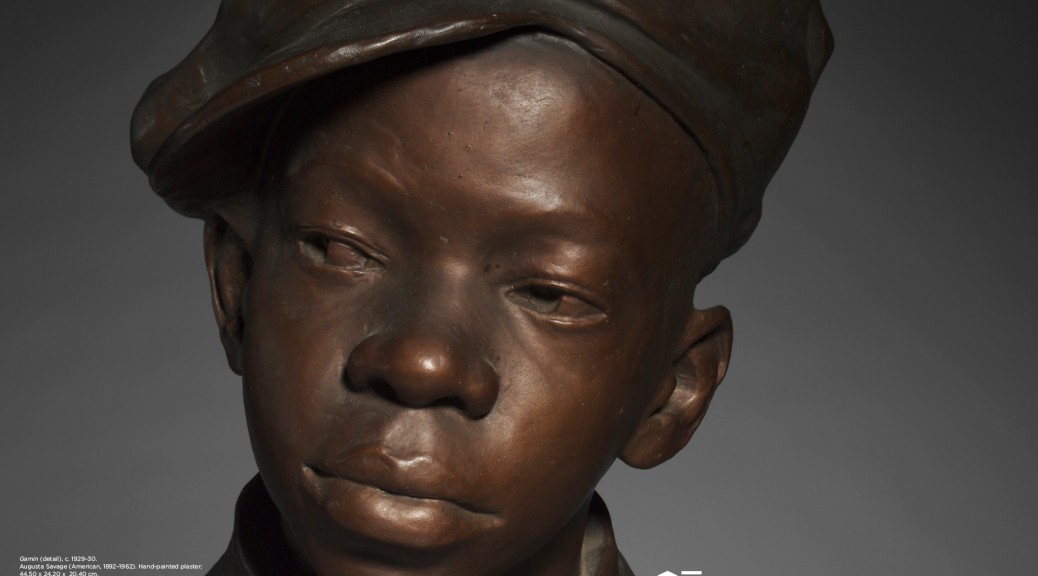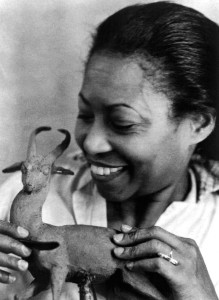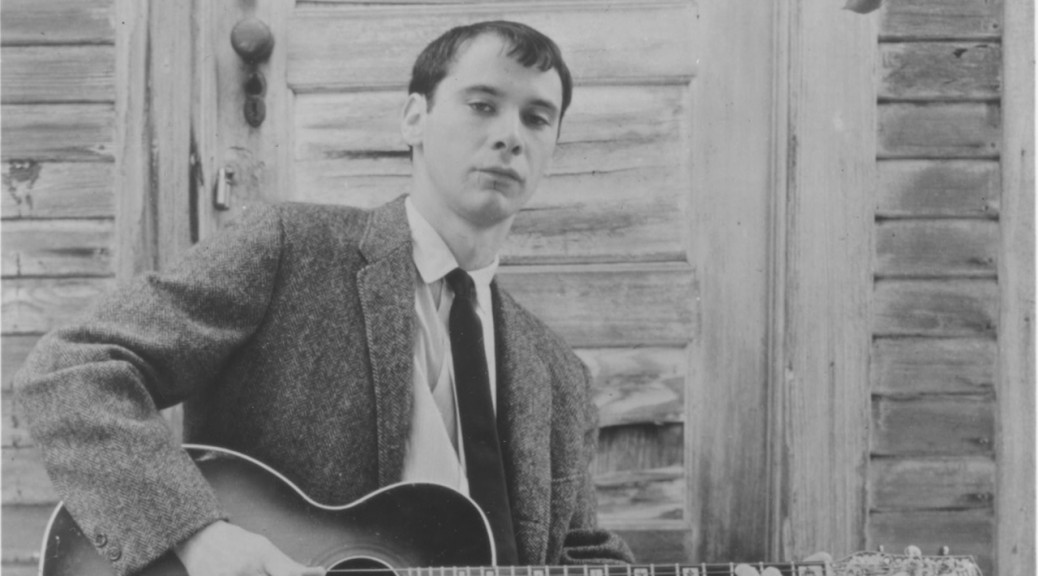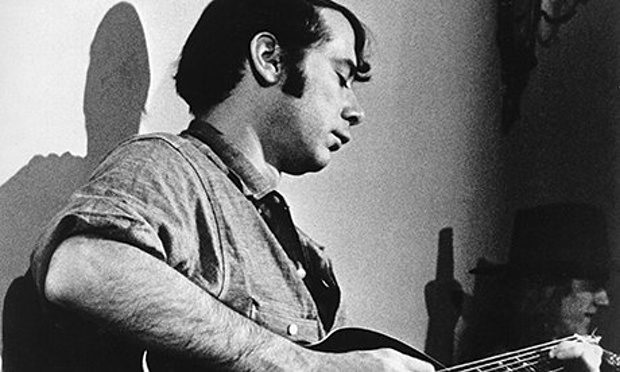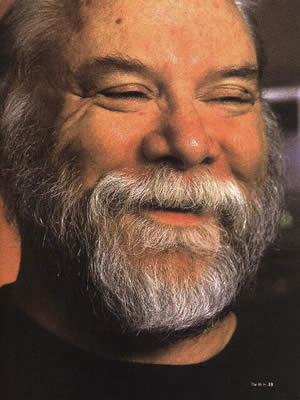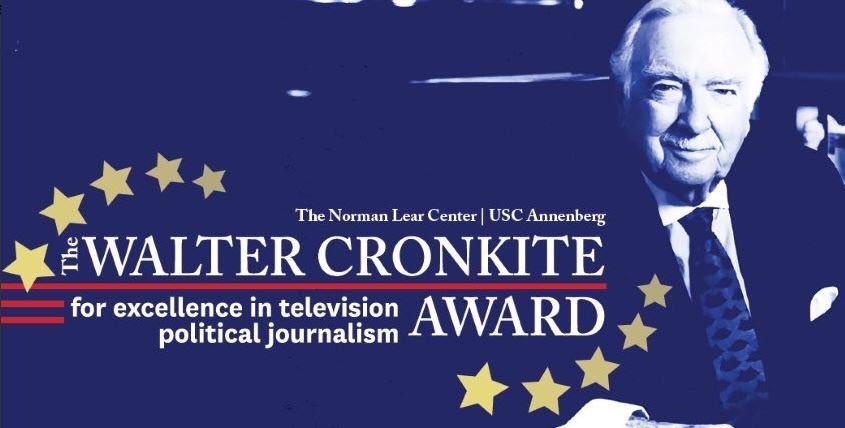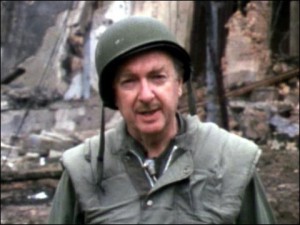Sculptress Augusta Savage
“I was a Leap Year baby, and it seems to me that I have been leaping ever since.”
Remembering and appreciating
February 29, 1892 — March 27, 1962
Sculptress Augusta Savage
Woodstock Music and Art Fair
500,000 attendees and its long list of now-famous performers have overshadowed the original goal of the Woodstock Music and Art Fair. As its name implied, it was going to be a weekend of art and music.
Now located on the festival site, the mission statement of Bethel Woods Center for the Arts reflects that intention to:
“…inspire(s), educate(s) and empower(s) individuals through the arts and humanities.”
Sculptress Augusta Savage
Her Life
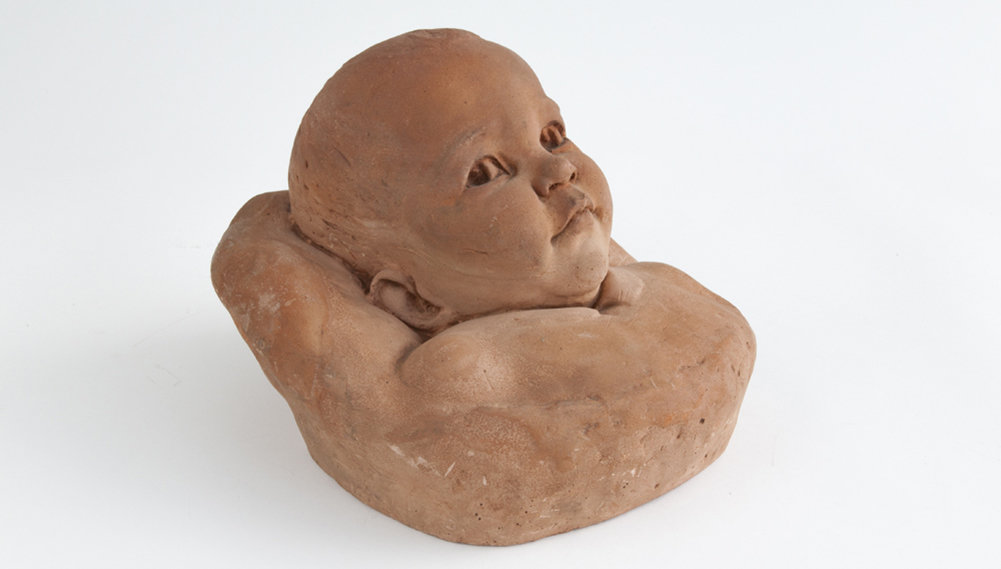
The life of Augusta Savage reflected the Center’s mission.
She was born Augusta Christine Fell in Green Cove Springs, Florida on February 29, 1892. She loved sculpting animals and other small figures as a child with the red clay others used to make bricks, but her father, a poor Methodist minister, frowned upon such an activity.
Sculptress Augusta Savage
Persistence
Augusta persisted.
Augusta Savage (her second husband was James Savage, the name she kept even after their divorce) moved to Harlem in 1921, where she cleaned houses to pay her rent and studied art at the tuition-free Cooper Union. She finished her degree in three years.
A bust she made of W.E.B. DuBois led to another commission for a busts of other African American leaders such as Marcus Garvey.
Her best-known work of the 1920s was Gamin, an informal bust portrait of her nephew, for which she was awarded a Julius Rosenwald Fellowship to study at the Fontainebleau School of the Arts in Paris.
Wendy N.E. Ikemoto of the New York Historical Society explains that the selection committee rescinded the scholarship. The reasoning was the white women “would feel uncomfortable sharing accommodations on the ship, sharing a studio, sharing living spaces. ...the way that these committee members expressed that decision and the justification for it — they were concerned about Savage. It would be uncomfortable for her.”
Despite the withdrawal, Savage stayed in Paris for three years studying, working, and winning awards.
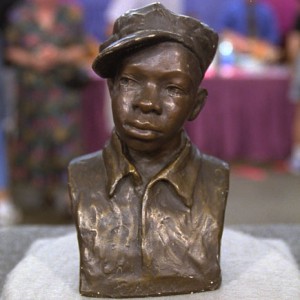
Sculptress Augusta Savage
Savage Studio of Arts and Crafts
According to the Smithsonian site, in 1932, she “returned to New York and established the Savage Studio of Arts and Crafts and became an influential teacher in Harlem. In 1934 she became the first African-American member of the National Association of Women Painters and Sculptors. In 1937 Savage’s career took a pivotal turn. She was appointed the first director of the Harlem Community Art Center and was commissioned by the New York World’s Fair of 1939 to create a sculpture symbolizing the musical contributions of African Americans. Negro spirituals and hymns were the forms Savage decided to symbolize in The Harp. Inspired by the lyrics of James Weldon Johnson’s poem Lift Every Voice and Sing, The Harp was Savage’s largest work and her last major commission. She took a leave of absence from her position at the Harlem Community Art Center and spent almost two years completing the sixteen-foot sculpture. Cast in plaster and finished to resemble black basalt, The Harp was exhibited in the court of the Contemporary Arts building where it received much acclaim. The sculpture depicted a group of twelve stylized black singers in graduated heights that symbolized the strings of the harp. The sounding board was formed by the hand and arm of God, and a kneeling man holding music represented the foot pedal. No funds were available to cast The Harp, nor were there any facilities to store it. After the fair closed it was demolished as was all the art.” (NYT announcement)
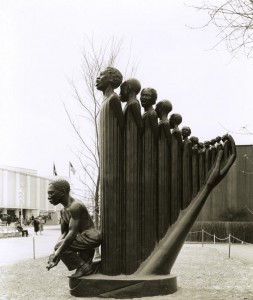
Sculptress Augusta Savage
Lost job
When Savage returned to Harlem, her job at the Harlem Center was taken. She attempted to establish two other centers, but a lack of funds during the late Depression, caused their failure.
In 1945, Savage moved to Saugerties, New York, in the Catskill Mountains to be with her daughter and her daughter’s family.
Although she visited NYC occasionally, the peace of rural Saugerties (as had been the case for earlier artists and would be the case for some other artists in the not-too-distant future) continued to attract her. She taught children in local summer camps, and produced a few portrait sculptures of tourists.
In 1962 Savage moved back to New York where she died in relative obscurity on March 26, 1962. (NYT obit)
Sculptress Augusta Savage
Legacy
Douglas Anderson School of the Arts
On September 14, 2017 the Douglas Anderson School of the Arts dedicated the Augusta Savage Sculpture Garden.
“Augusta Savage was an African-American artist who failed to receive the recognition she deserved in her lifetime,” said Khanh Tran, the sculpture instructor at DA. “This sculpture garden is our way of commemorating her contributions to the local and national artistic landscape.”
Restore art to replace Confederate statues
Aviva Kempner wrote in The NY Times that as important as the removal of Confederate statues was, it was just as important to replace them with appropriate art such as Augusta Savage’s. Kempner wrote, “First on the list should be “The Harp,” a magnificent work by the noted African-American sculptor Augusta Savage that was demolished at the closing of the 1939 World’s Fair in New York..”
This short video shows Savage at work.
References:

